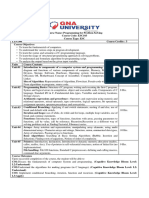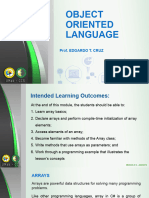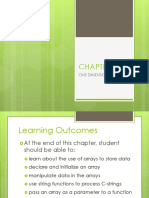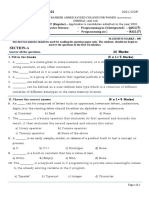0% found this document useful (0 votes)
31 views5 pagesPrinciples of Programming
The document outlines the course structure for 'Principles of Programming using C' effective from the academic year 2024-2025, detailing course objectives, content, and assessment strategies. It covers fundamental programming concepts in C, including data types, control structures, arrays, pointers, and file management, along with practical laboratory components. The course aims to develop proficiency in C programming and includes a mix of theoretical and practical assessments.
Uploaded by
shreyasdbangeraaCopyright
© © All Rights Reserved
We take content rights seriously. If you suspect this is your content, claim it here.
Available Formats
Download as PDF, TXT or read online on Scribd
0% found this document useful (0 votes)
31 views5 pagesPrinciples of Programming
The document outlines the course structure for 'Principles of Programming using C' effective from the academic year 2024-2025, detailing course objectives, content, and assessment strategies. It covers fundamental programming concepts in C, including data types, control structures, arrays, pointers, and file management, along with practical laboratory components. The course aims to develop proficiency in C programming and includes a mix of theoretical and practical assessments.
Uploaded by
shreyasdbangeraaCopyright
© © All Rights Reserved
We take content rights seriously. If you suspect this is your content, claim it here.
Available Formats
Download as PDF, TXT or read online on Scribd
/ 5
























































































